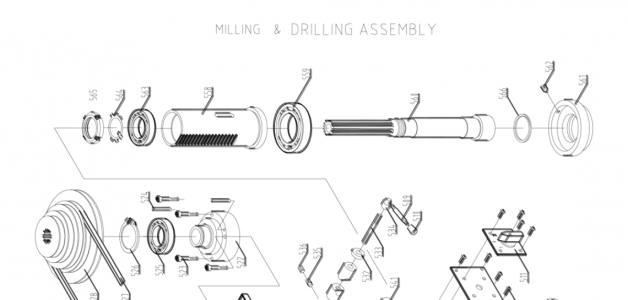I was trying to make some blocks to raise the vise up closer to the spindle so I could do smaller things, namely some valve and other work on my airguns. I cut a couple of 2.5" lengths of an old trailer hitch and was happily milling the second one down when one of the gib screws got caught on the ways for the carriage (not sure about my terminology here) and caused the carriage to sort of jump a little bit. This had happened to me a few times before and I should have rubber banded the little floppy thumb screw thingies that tighten up the gibs. Kind of a dumb design. I will do something to keep these from flopping down again. Anyway, I shut off the machine to reset my work, turned it on, it spun up to speed for about 5 seconds and then quickly slowed and stopped. Removing the belts, the drive and secondary pullies spin freely. The motor spins right up. I can still turn the shaft by hand but it is tight. I can feel a tightness when turning the pulley at the top, and I can also feel a sort of chunky feel when turning the chuck. Something is gonna have to come apart I think. Might have blown a bearing? I don't know. I was running it at the full 3000 rpm for several minutes at a time, and I can see that I melted the grease in the lower bearing a little bit. I think it was that last jump that broke something though.
...Any advice?
...Any advice?

